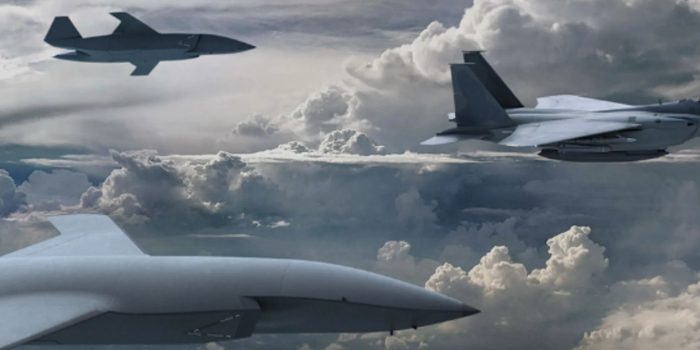The United States Pentagon has announced an extensive program to make AI-piloted fighter jets. Dubbed the Collaborative Combat Aircraft (CCA) project, it’s part of a $6 billion plan to add 1,000 new drones to the US Air Force (USAF).
The AI-controlled drones will be tasked with supporting human pilots and actively taking part in jobs like covering, escorting, helping with fires, and scouting. The drones are also expected to perform risky maneuvers, escort crewed planes, carry weapons for ground and air targets, and act as scouts.
The Pentagon plans to select two private contractors by summer to produce these AI-piloted planes, to complete hundreds within five years. Each aircraft is estimated to cost between $10 and $20 million, significantly cheaper than traditional crewed fighter planes like the F-35 or B-21.
“[The AI-piloted drones] offer a lot of things that traditional crewed fighter planes just aren’t designed to do,” Air Force Secretary Frank Kendall told the Wall Street Journal.
These AI-piloted drones will also be designed to be expendable, flying one or two missions before being retired or destroyed, further reducing costs compared to manned aircraft. This aligns with the Pentagon’s broader vision for its “Replicator program” of attritable drones, aimed at countering China’s growing drone capabilities.

Several major defense contractors, including Boeing, Lockheed Martin, Northrop Grumman, and General Atomics, have confirmed their intent to develop these drones. Boeing has unveiled its MQ-28 “Ghost Bat” proposal, emphasizing its AI capabilities and affordability.
“The MQ-28 has enough capability to get the job done – from ISR to tactical early warning and more – but with a low-cost design that allows operators to confidently put it on the front line,” they add.
Deputy Secretary of Defense Kathleen Hicks has highlighted the potential of AI-enabled autonomous vehicles to provide affordable and expendable military units, accelerating military innovation. However, there are concerns among pilots about the potential implications of unmanned aircraft on their roles and job security.
The USAF’s requirement for 100 new AI-piloted jets annually underscores the urgency of this development. Companies are advised to prioritize simplicity and focus on minimum mission requirements to expedite deployment. Nonetheless, concerns persist regarding the impact of unmanned aircraft on human pilots.


